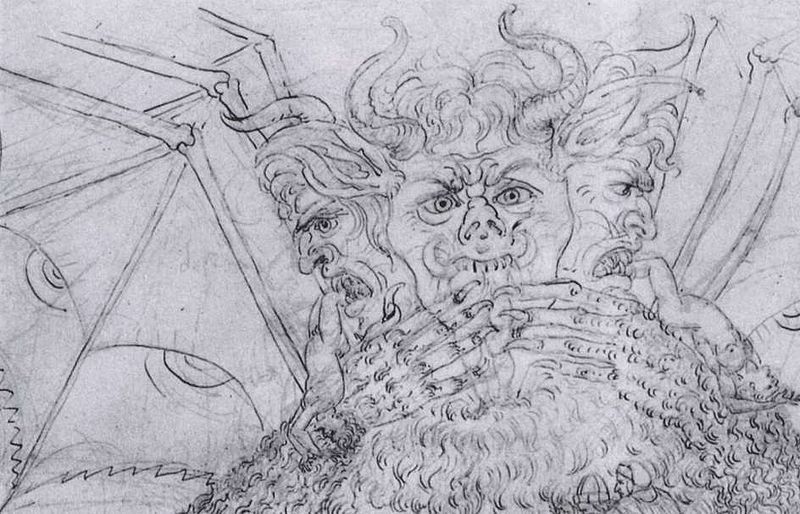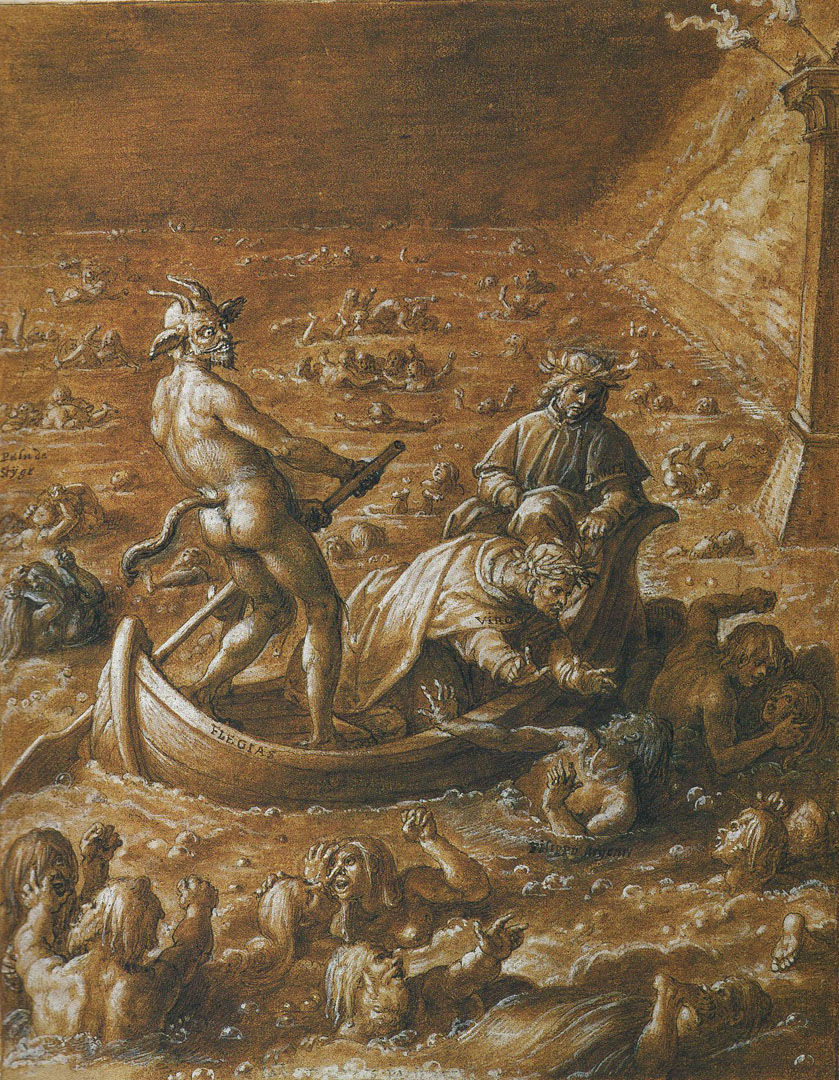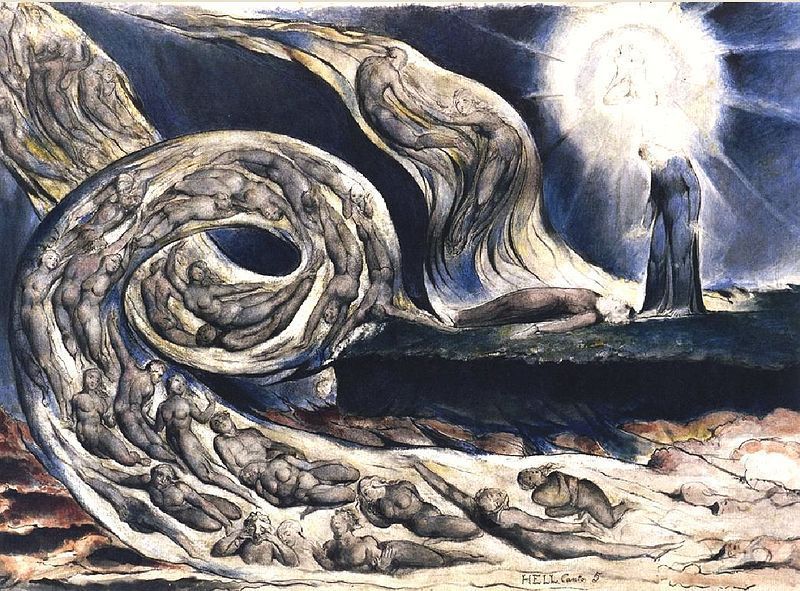BOTTICELLI
-Not only was he the author of a commentary on the work, but he also illustrated the Inferno. According to my source, "Botticelli was extremely faithful to Dante's text and was very precise in devoting illustrations to every scene that he considered of utmost interest." You actually might already be familiar with his Map of Hell.
(might want to find this one on the internet and zoom in!!!)

STRANDANUS
-Flemish painter, lived in Florence, led Italian Mannerism, picture below is from Canto 8 (wrathful & slothful being punished, Dante & Virgil cross the river Styx with ferryman Phlegyas)
WILLIAM BLAKE
-We've all heard of this guy! ("A Poison Tree," "The Tyger," & "The Lamb"...poetry unit!)
-"In these illustrations, Blake paid close attention to the details of Dante’s poem but also brought his own perspective to some of Dante’s central themes, including sin, guilt, punishment, revenge, and salvation. Blake’s imagery sometimes betrays a critical attitude toward Dante but also coexists with many signs of intellectual sympathy."

WILLIAM BOUGUEREAU
-Realistic paintings, not respected during his lifetime because he rejected the norms: Impressionist and Avant-garde movements-What the heck is that painting below? "In Canto VII, Dante and Virgil encounter falsifiers, which include alchemists, counterfeiters, perjurers, and imposters. Capocchio, a heretic and alchemist, is attacked and bitten on the neck by Gianni Schicchi, who had usurped the identity of a dead man to fraudulently claim his inheritance." Hmmm...I can't comment too much on this painting as I haven't read Canto VII quite yet, but it's interesting and disturbing, to say the least.

Sources: https://www.florenceinferno.com/artworks/, https://www.florenceinferno.com/the-map-of-hell/


2 comments:
Thank you so much for sharing these Jesse!! One of my favorite things last year was looking at art work that was inspired by Paradise Lost - I think it's so inspiring to see what the imagination is capable of when presented with such epic ideas. The details and realistic qualities in Bougureaus paintings are incredible, I especially like the naked souls that almost fade into the background due to the distribution of light. Blake also has an interesting interpretation, as the fluidity of the souls movement is almost emblematic of their overpowering fate to be blown around for eternity.
I really enjoyed seeing these masterpieces. As I was reading the introduction and the first few cantos of the Divine Comedy, I had a different mental image of the mapping of the hell described in the introduction. In addition, I imagined the she-wolf (assuming that the second Botticelli image is the she-wolf) completely different than illustrated. For Canto 8, I am sure that I would have visualized the scene of wrathful and slothful being punished differently (not anymore because seeing the image introduced bias into my view) regardless of how vivid Dante describes it. Interesting to say the least.
Post a Comment